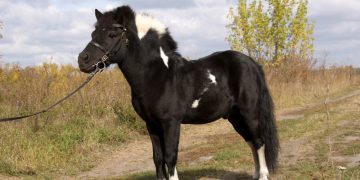Parrots are among the most fascinating and intelligent birds on the planet. Known for their vibrant feathers, incredible vocal abilities, and impressive problem-solving skills, these birds have captivated humans for centuries. Whether you’re a bird enthusiast, a pet owner, or just curious about parrots, this article will take you on an in-depth journey into the coolest and most surprising facts about these incredible creatures.
1. Parrots Are Some of the Most Intelligent Birds on Earth
Parrots belong to a rare group of highly intelligent animals, alongside primates, dolphins, and crows. Their problem-solving abilities, memory, and communication skills make them stand out in the avian world.
🔹 They Can Use Tools: Some species, like the Goffin’s cockatoo, have been observed using tools to access food. This shows advanced cognitive abilities.
🔹 They Understand Cause and Effect: Studies show that parrots can comprehend complex concepts, such as cause and effect, which is typically seen in young human children.
🔹 They Can Solve Puzzles: Parrots have been tested in lab settings and have demonstrated the ability to unlock food puzzles, much like a primate.
One of the most famous parrots in history, Alex the African Grey, could recognize shapes, colors, numbers, and even understand simple concepts like “bigger” and “smaller.”
2. Parrots Have Impressive Lifespans
Unlike most birds, which have relatively short lifespans, parrots can live for decades—sometimes even longer than humans!
🔹 Smaller species, like budgies, live 5-10 years.
🔹 Medium-sized parrots, such as African Greys and Amazon parrots, can live 40-60 years.
🔹 Larger species, like macaws, can live 70-100 years!
The oldest recorded parrot, Cookie the Cockatoo, lived to be 83 years old! This long lifespan means owning a parrot is a lifelong commitment.
3. Parrots Can Mimic Human Speech and Sounds
One of the most famous abilities of parrots is their skill at mimicking human speech. Some species, like African Grey parrots and Indian Ringneck parakeets, can learn hundreds of words and phrases.
🔹 They Don’t Just Copy—They Understand: Some parrots can use words contextually, meaning they associate words with their meanings.
🔹 They Can Imitate Sounds: Beyond speech, parrots can mimic doorbells, phone ringtones, and even car alarms.
🔹 Each Bird Has a Unique Voice: Just like humans, parrots have individual vocal patterns.
Fun fact: An African Grey named Einstein can imitate more than 200 words and sounds, including laughter and musical notes!
4. Parrots Form Strong Emotional Bonds
Parrots are social creatures and form deep connections with their flock—or, in captivity, their human owners.
🔹 They Show Affection: Parrots express love by preening (grooming) their owners, cuddling, or even regurgitating food (a sign of affection in bird behavior).
🔹 They Experience Emotions: Studies suggest parrots can feel joy, jealousy, sadness, and even grief.
🔹 They Mate for Life: Many parrot species, including macaws and cockatoos, form monogamous pairs and stay together for life.
A lonely or neglected parrot can develop severe emotional distress, leading to behaviors like feather-plucking or self-harm.
5. Parrots Can Fly at Incredible Speeds
Parrots are not just beautiful—they’re built for flight. Some species can fly long distances at impressive speeds.
🔹 Macaws can reach speeds of 35 mph (56 km/h).
🔹 Parakeets and cockatiels are fast fliers, capable of sudden maneuvers.
🔹 Some wild parrots migrate across vast distances to find food and shelter.
Many parrots also have exceptional navigation skills, allowing them to return home even after traveling miles away.
6. Parrots Communicate with Their Own Language
Even though parrots can mimic human speech, they have their own complex language.
🔹 Body Language: Parrots use head bobs, tail flares, and wing spreads to communicate emotions.
🔹 Vocalizations: They use whistles, squawks, and chirps to send messages to each other.
🔹 Dialects: Different flocks of wild parrots have unique “dialects” that only members of their group understand.
Some studies suggest that parrots name their chicks, giving them distinct calls that function like human names!
7. Some Parrots Are Endangered Due to Habitat Loss
Many parrot species face threats from deforestation, the pet trade, and climate change.
🔹 The Spix’s Macaw, famously known from the movie Rio, is nearly extinct in the wild.
🔹 The Kakapo, a flightless parrot from New Zealand, has fewer than 250 individuals left.
🔹 The Scarlet Macaw’s habitat is shrinking due to deforestation.
Conservation efforts, such as breeding programs and habitat restoration, are helping some species recover, but many parrots remain at risk.
8. Parrots Have Unique Feet for Climbing and Holding Objects
Unlike most birds, which have three toes pointing forward and one pointing backward, parrots have zygodactyl feet—two toes forward and two toes backward.
🔹 This allows them to grip branches securely.
🔹 They can use their feet like hands, holding food or even toys.
🔹 Some parrots, like cockatoos, are even known to “wave” with their feet!
Parrots are one of the few birds that can use their feet to manipulate objects, similar to how humans use hands.
9. Parrots Have Strong Beaks That Keep Growing
A parrot’s beak is one of its most powerful tools.
🔹 Beaks Grow Continuously: Just like human fingernails, a parrot’s beak keeps growing and needs regular wear.
🔹 They Have Incredible Bite Force: A Hyacinth Macaw can exert a bite force of up to 700 pounds per square inch (PSI)—strong enough to crack Brazil nuts!
🔹 They Use Their Beaks for More Than Eating: Parrots use their beaks for climbing, exploring, and even expressing emotions.
Providing parrots with chew toys and cuttlebones helps them maintain a healthy beak.
10. Parrots Are Found on Every Continent Except Antarctica
Parrots naturally inhabit a wide range of environments, from tropical rainforests to dry deserts.
🔹 Amazon parrots thrive in South America’s rainforests.
🔹 Cockatoos live in Australia’s dry woodlands.
🔹 The Kea, an alpine parrot, survives in New Zealand’s cold mountain regions.
With over 400 species worldwide, parrots have adapted to many different climates and ecosystems.
Final Thoughts: Parrots Are Truly Extraordinary Birds
Parrots are more than just colorful, talkative birds—they are intelligent, social, and fascinating creatures with unique abilities. From their long lifespans and problem-solving skills to their strong emotional connections and mimicry talents, parrots continue to amaze both scientists and bird lovers alike.
Whether you admire them in the wild or as pets, these birds deserve our appreciation and protection. If you ever have the chance to interact with a parrot, remember—you might just be talking to one of the smartest animals on the planet!
🐦💡 Which parrot fact surprised you the most? Let us know in the comments below!

























